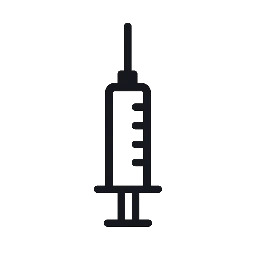Ensuring the quality and safety of products, especially those related to health and wellness, is paramount. This guide will help you navigate the process of identifying trustworthy vendors and understanding the crucial information provided in a Certificate of Analysis (COA).
How to Identify Reputable Vendors
When evaluating a vendor, especially for products that can impact your health, it’s essential to look for several key indicators of trustworthiness and reliability. Here are some criteria to consider:
- Transparent Access to Third-Party Lab Testing (COAs): This is one of the most critical factors. Reputable vendors will make COAs readily available for their products, often on their website. These COAs should be from accredited third-party laboratories, not from the vendor themselves.
- Professional and Secure Website: A vendor’s website should be professional, well-organized, and secure. Look for HTTPS in the URL, which indicates a secure connection. A clear and easy-to-navigate website suggests a commitment to customer experience and transparency.
- Clear and Accessible Contact Information: A trustworthy vendor will provide clear and accessible contact information, including a physical address, phone number, and email address. This demonstrates that they are a legitimate business and are available to address customer inquiries and concerns.
- Positive Customer Reviews and Testimonials: Look for reviews from verified purchasers on the vendor’s website and on independent review platforms. Consistently positive feedback is a good indicator of a reliable seller. Be wary of vendors with no reviews or an overwhelming number of generic, overly positive reviews.
- Fair and Realistic Pricing: While competitive pricing is attractive, be cautious of prices that seem too good to be true. Extremely low prices can be a red flag for counterfeit or low-quality products.
- Secure Payment Options: Reputable vendors will offer secure payment options that protect your financial information. Be wary of vendors that only accept risky payment methods with no buyer protection.
- Clear and Comprehensive Product Information: The vendor should provide detailed information about their products, including ingredients, usage instructions, and potential side effects. A lack of transparency in this area is a major concern.
- No Unrealistic or Unsubstantiated Claims: Be skeptical of vendors that make exaggerated or unsubstantiated claims about their products. Reputable vendors will provide information that is backed by scientific evidence and will not make promises of guaranteed results.
What to Look for in a Certificate of Analysis (COA)
A Certificate of Analysis (COA) is a document that verifies that a product meets its specifications. It is a crucial tool for ensuring product quality, purity, and safety. Here are the key elements to look for in a COA:
- Third-Party Laboratory Information: The COA should clearly identify the third-party laboratory that conducted the testing. This should include the lab’s name, address, and contact information. An independent lab provides an unbiased assessment of the product.
- Product Identification: The COA should clearly identify the product being tested, including the product name, batch number, and lot number. This ensures that the COA corresponds to the specific product you are purchasing.
- Date of Analysis: The COA should include the date the analysis was performed. This helps to ensure that the testing is recent and relevant.
- Purity and Potency Analysis: This section details the concentration of the active ingredients in the product. It should confirm that the product contains the amount of the active ingredient that is stated on the label.
- Contaminant Testing: A comprehensive COA will include testing for various contaminants to ensure the product is safe for consumption. This should include:
- Heavy Metals: Testing for heavy metals such as lead, mercury, arsenic, and cadmium.
- Pesticides: Testing for a range of pesticides to ensure the product is free from harmful agricultural chemicals.
- Residual Solvents: Testing for any residual solvents that may have been used in the manufacturing process.
- Mycotoxins: Testing for mycotoxins, which are toxic compounds produced by certain types of fungi.
- Microbiological Contaminants: Testing for harmful bacteria, yeast, and mold.
- Clear and Understandable Results: The results of the analysis should be presented in a clear and understandable format. The COA should indicate whether the product passed or failed each test, and it should provide the specific levels of any detected compounds.
By carefully evaluating vendors and scrutinizing COAs, you can make informed decisions and ensure that you are purchasing high-quality, safe, and effective products.


